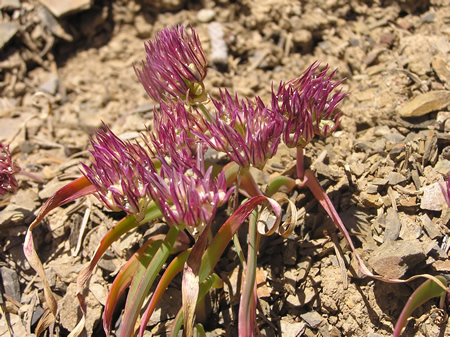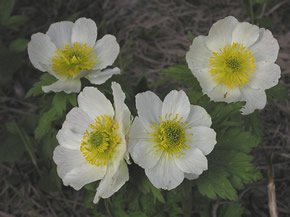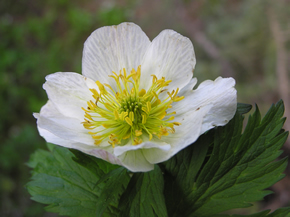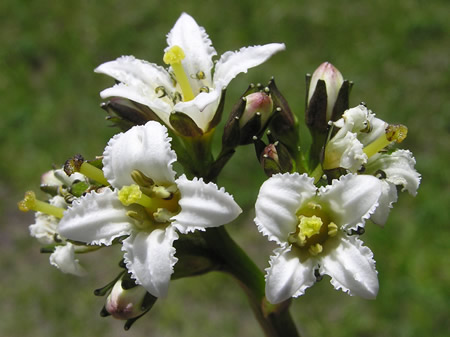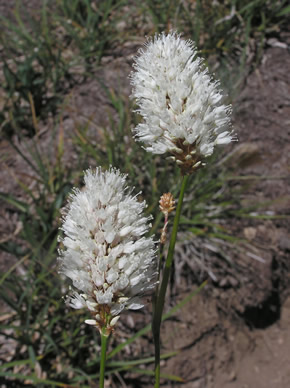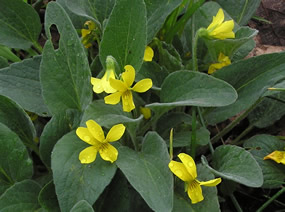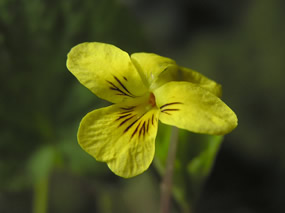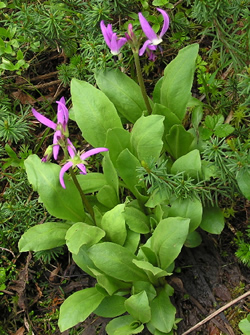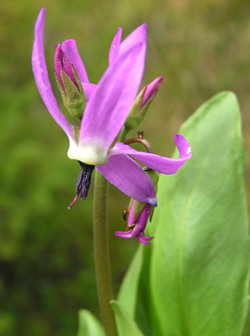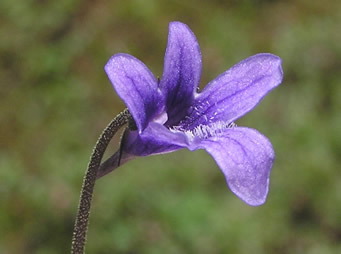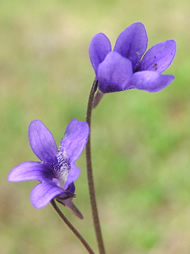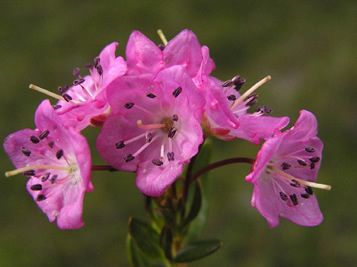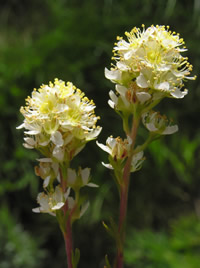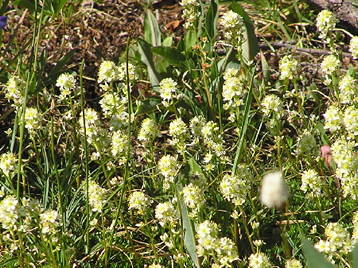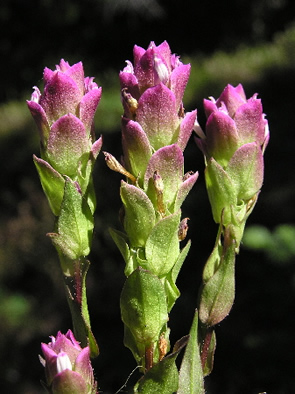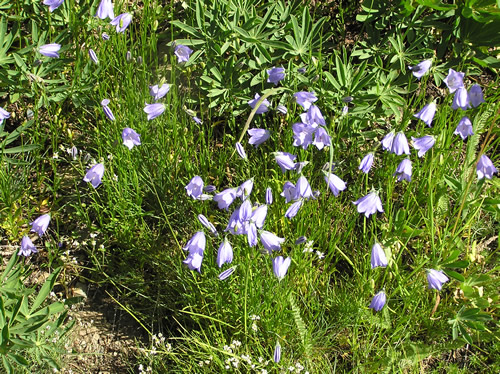In the Shadow of Peaks |
|
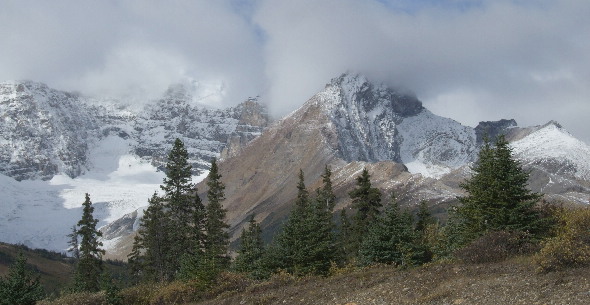 |
|
The beauty of flowers in nature, extends from the coastal shores, across the plains and forests, and eventually to the higher elevations where we find those born, In the Shadow of Peaks. |
|
|
|
The alpine meadows share many beautiful sights. The flowers, with their season so very short, put on a magnificent show with so many unique plants. |
|
|
|
This is one of those strange looking plants, the Olympic Onion, Allium crenulatum. In the height of summer the leaves quickly shrivel and the dark pink color of the flowers fades. |
|
|
| |
In contrast to the Olympic Onion, the Globeflower, Trollius Laxus, appears as the snows retreat. They enjoy the conditions created by the melting snow in seapage areas and bogs. |
| |
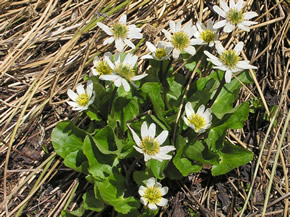 |
|
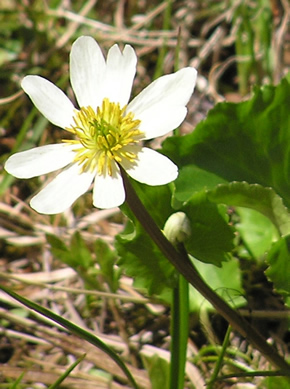 |
Mountain Marsh-Marigold, Caltha Leptosepala, is another early riser, up when the first water from the melting snow appears. Usually white, but sometimes tinged bluish. A single flower to each leafless stem 4 inches to 8 inches in height |
|
| |
|
|
|
One more early bloomer, high in the mountains, is this neat looking flower with the strange name, Deer Cabbage, it is a very attractive flower with the crinkled edges of the petals. |
|
|
| |
There are many beautiful and sometimes strange flowers in the higher elevations. One of these, more readily recognized when the flowers are finished is Old Man's Whiskers. American Bistort is another plant that has a different look.
|
| |
|
|
With the Evergreen Violet, Viola Sempervirens, among the violets that help to beautify so many of the places that we are fortunate enough to visit. |
|
|
| |
There are numerous plants with the common name of shooting star, in the higher elevations we have the Tall Mountain Shooting Star, Dodecatheon jeffrey. The leaves are lush and large, quite different from the Broad-leaved Shooting Star from the lower areas. |
|
|
|
Common butterwort. Pinguicula vulgaris, is a carnivorous perennial of bogs and damp areas with a rosette of yellow-green, sticky leaves that can trap and digest insects which they need because of the poor nutrition thay receive in their environments. |
|
|
|
Another moist lover is Sitka Valerian, Valeriana sitchensis, it enjoys the middle and upper altitudes of the mountains. It can be found in the wet meadows as spring arrives and the snow pack gives way to the warmer days. |
|
|
One of the shrubs that one may encounter, Western Bog-Laurel, Kalmia microphylla ssp occidentalis, is a handsome looking plant but as it is rather low growing it can easilly be passed by at it blends in very well with the red colors of heathers that occupy their place at these altitudes.. |
|
|
|
Many gardeners know rhododendrons and indeed may very well have plants in their garden, so the mountains have theirs, the White Rhododendron, Rhododendron albiflorum, This shrub can reach a height of over well 6 feet with beautiful groups of white flowers. |
| |
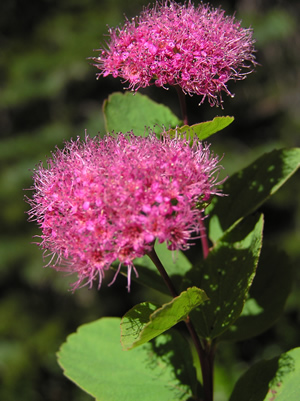 |
|
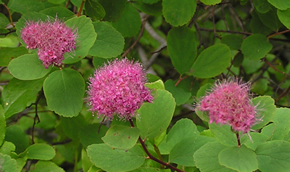 |
This low flowering shrub, never reaching over three feet high bears, is Spiraea densiflora, with the common name Mountain Spiraea. It bears fragrant pom-pons of rosy red flowers. It grows in moist thickets and open rocky areas at subalpine elevations. |
|
| |
|
Mountainbells, Stenanthium occidentale, is one of the poisonous plants of the high elevations. The beautiful bell flowers make this a most magnificent plant. |
|
|
|
|
|
One of the low growing plants that is mat forming is Luetkea pectinata, with the common name of Partridgefoot. This common name refers to the leaves that resemble the footprints of those birds. Single plants are easily missed by the casual stroller, but are worth a close look when found.
|
|
|
|
Mountain Owl Clover, Orthocarpus imbricatus, is an annual plant which likes the dry meadows and rocky slopes with thin soil. All the leaves are on the stem and lance shaped. Found at middle to high elevations. |
| |
|
|
We end this selection of alpine flowers, with a close up image of the flowers known as, the Bluebells of Scotland. We also showed this wonderful plant in the introduction to this group of flowers, living, In the Shadow of Peaks.
|
|
|
THIS IS A DEREILA PRESENTATION. |


